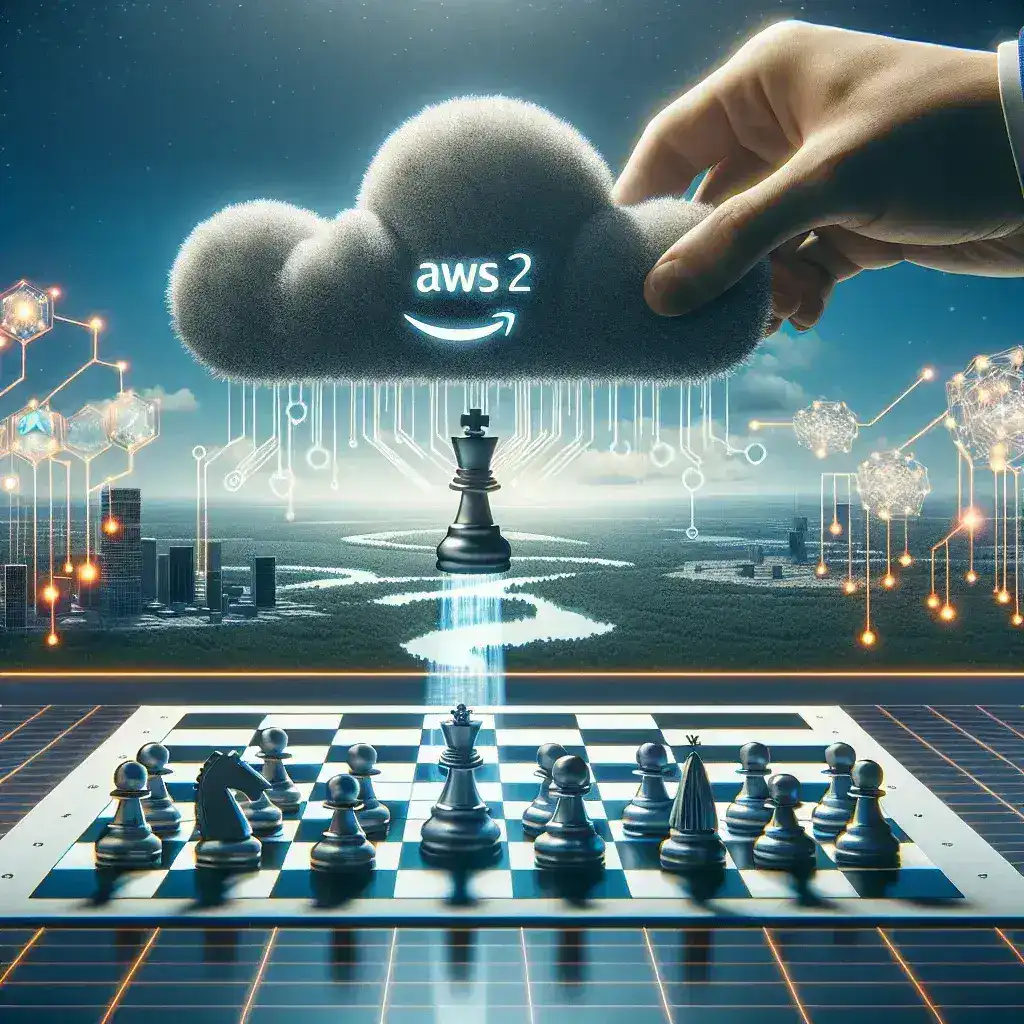
Amazon Loses Key AWS Generative AI VP Amidst Tech Talent War
The Great AI Talent Grab: Amazon’s Loss and the Broader Tech Picture
The tech world is buzzing. Amazon Web Services (AWS), a titan in cloud computing, recently lost a Vice President deeply involved in their generative AI initiatives. This isn’t just another executive shuffle; it’s a stark illustration of the fierce, ongoing talent war raging in the burgeoning field of artificial intelligence, particularly within the generative AI sector.
The departure, while not publicly detailed beyond a simple announcement of the VP’s move to another company, speaks volumes. It underscores the premium placed on individuals with expertise in large language models (LLMs), machine learning, and the complex engineering required to build and deploy sophisticated AI systems. These individuals are the lifeblood of this rapidly evolving industry, and companies are vying for their services with unprecedented intensity.
The High Stakes of Generative AI
Generative AI isn’t just another tech trend; it’s a paradigm shift. The ability to create novel content, code, and designs using AI is transforming industries from healthcare and finance to entertainment and marketing. This transformative power explains the frantic competition for talent. Companies understand that securing top-tier AI experts is paramount to maintaining a competitive edge in this space. The loss of a VP with a proven track record in generative AI, therefore, is a significant blow to Amazon’s ambitions.
This isn’t a situation unique to Amazon. Google, Microsoft, Meta, and countless startups are all aggressively recruiting AI specialists. The competition manifests itself in various ways: exorbitant salaries, lucrative stock options, enticing benefits packages, and promises of working on cutting-edge projects with significant impact. It’s a seller’s market, and top AI talent holds all the cards.
Analyzing Amazon’s Position
Amazon’s AWS division has been a major player in the cloud computing arena, but the generative AI race is a different beast. While AWS offers a robust infrastructure for AI development, building and deploying cutting-edge generative AI products requires a different skill set. This executive departure highlights potential gaps in AWS’s AI talent pipeline. It suggests that despite their resources, Amazon might be facing challenges in attracting and retaining the top talent needed to compete effectively with rivals who are equally, if not more, aggressively pursuing AI specialists.
The loss also raises questions about Amazon’s internal AI strategy. Is the company adequately investing in its AI workforce? Are its internal processes and culture conducive to attracting and retaining top talent in this demanding field? These are crucial questions for Amazon to answer, as their future success in the generative AI space hinges on their ability to build and maintain a strong, highly skilled team.
Beyond the Individual: A Broader Trend
The competitive landscape for AI talent extends beyond individual hires. Universities and research institutions are becoming battlegrounds for recruiting promising PhD candidates and post-doctoral researchers. Companies are investing heavily in university partnerships and research grants, hoping to secure access to the next generation of AI experts before their competitors do. The implications are far-reaching, potentially impacting the pace of innovation and the distribution of AI expertise across the globe.
This global talent scramble has ethical implications as well. The concentration of AI expertise in a limited number of companies raises concerns about fairness, bias, and access. It’s essential for policymakers and industry leaders to consider these broader implications and work towards a more equitable distribution of AI resources and opportunities.
The Future of AI Talent Acquisition
Predicting the future of this talent war is challenging, but several trends seem likely to continue. The demand for AI talent will likely remain high for the foreseeable future, driving up salaries and benefits. Companies will continue to invest heavily in recruitment and retention strategies, including specialized training programs and innovative compensation packages. We can also expect to see greater emphasis on diversity and inclusion initiatives to broaden the pool of AI talent.
Furthermore, the rise of remote work and global talent pools is likely to reshape the landscape. Companies will have access to a wider range of candidates, but managing geographically distributed teams will require new strategies and tools. The competition for talent will become increasingly global, intensifying the already fierce battle for AI expertise.
The Implications for Consumers and Society
While the talent war plays out behind the scenes, its impact is felt by consumers and society as a whole. The availability of skilled AI professionals directly influences the speed of innovation and the quality of AI-powered products and services. A shortage of talent could potentially slow down the development of beneficial AI applications in healthcare, education, and other critical sectors.
Conversely, a robust and diverse AI workforce could accelerate innovation and lead to the creation of transformative AI technologies that improve lives and solve complex societal problems. The outcome ultimately depends on the ability of companies, universities, and governments to effectively address the challenges of attracting, developing, and retaining the talent needed to drive the AI revolution forward.
In conclusion, the departure of Amazon’s VP of AWS generative AI isn’t an isolated incident; it’s a symptom of a much larger issue. The fierce competition for AI talent is reshaping the tech landscape and has far-reaching implications for businesses, consumers, and society. How companies respond to this challenge will ultimately determine who leads the AI revolution.
For further reading on the evolving landscape of AI talent, you may want to consult resources like Brookings Institution’s AI research or McKinsey’s reports on AI.
